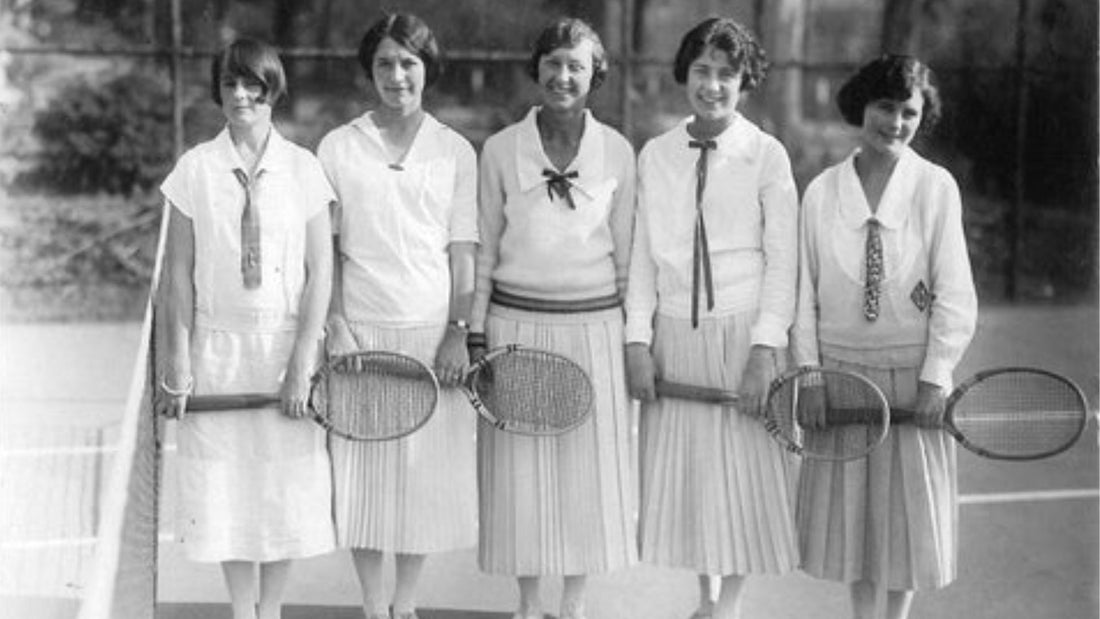Modesty to Mobility: The Evolution of Women's Activewear
Women's activewear has evolved significantly from the 1920s to today, reflecting changing societal norms, advancements in fabric technology and growing movements for inclusivity and body positivity. Each decade brought its own distinct changes, driven by the cultural and social landscape of the time.
In the 1920s, women’s sportswear was quite modest with ankle-length skirts, loose blouses and cumbersome materials that restricted movement. Tennis and swimming were popular activities, but functionality in activewear was secondary to modesty.

The 1930s and 1940s marked the beginning of more practical designs. Women began wearing shorter skirts and more breathable fabrics as sports like cycling and golf gained popularity. While clothing was still relatively modest, the focus shifted slightly towards greater freedom of movement, in line with the increasing acceptance of women’s participation in sports.

By the 1950s, the fashion world was embracing fitted silhouettes. Activewear began to reflect this trend, with form-fitting pedal pushers and sleeveless tops making their way into mainstream fashion. The emphasis was on combining femininity with athleticism, mirroring the decade’s overall focus on glamor and poise.

The 1960s and 1970s were pivotal decades for women’s sportswear, spurred by the rise of feminism and a growing fitness culture. This era saw the introduction of stretch fabrics like Lycra, making garments such as leggings, leotards and sports bras increasingly popular. These designs offered women the freedom to exercise with greater mobility and comfort.

In the 1980s, the aerobics craze swept the world, bringing with it a bold and vibrant style of activewear. Colorful spandex, leg warmers and oversized tops became iconic. The decade's fitness boom promoted the idea that physical activity was for everyone, influencing a growing body positivity movement in sports fashion.

From the 1990s onward, brands like Nike, Adidas and Lululemon began prioritizing performance-oriented gear, designed to accommodate diverse body types. Stretchy, breathable materials and more inclusive sizing became standard. Today, women's activewear is as much about comfort, inclusivity and confidence as it is about athletic performance.

At Ayana Active, we’ve studied the history of activewear extensively and are bringing you our favorite parts in the Pep Talk line - modest, mobile, breathable and fashionable for any woman who wants to feel good in her clothing.
Stay tuned for more exciting updates from Ayana Active as we continue to redefine the boundaries of fashion, sustainability, and empowerment. Follow us on Instagram @ayanaactive.




3 Comments
Thank you for sharing! The history is fascinating and makes me appreciate the mission of your brand even more. Balancing modesty and functionality ❤️.
So much can be said about the evolution of women’s activewear. Looks like a lot of research, thought and planning has been put into AA designs. That makes me even more confident about picking up this unique line when it drops 👍🏽
My biggest ick with mainstream activewear is the lack of functionality! If you do a pull up there’s a chance you’re exposed! What I love about AyanaActive is that they’ve gotten rid of these issues! Now you can do ANY exercise comfortably with no chance of exposing yourself to other gym goers. We love a brand that combines functionality with modesty!!!